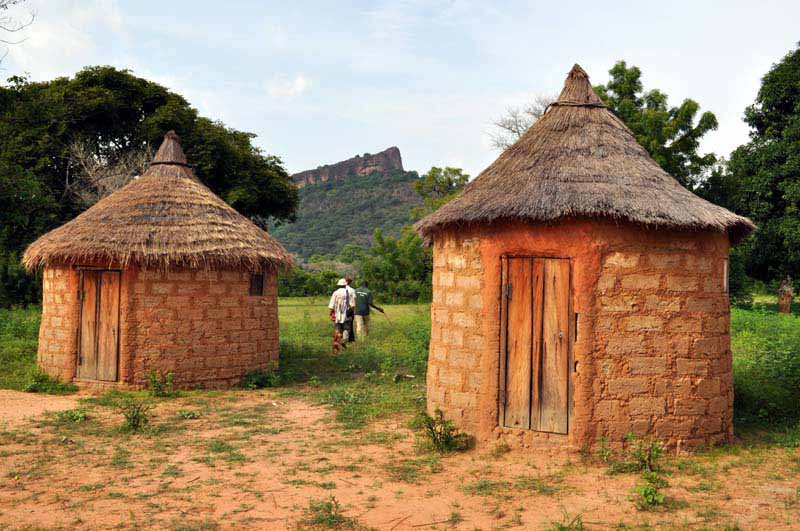
The last inhabitants of the village left in 1980… thus, the good condition of the abandoned dwellings.
Image courtesy of: ABC Burkina
Burkina Faso in west Africa is a country filled with desserts and baobab trees… and it is also the place where more than sixty languages are spoken. Hidden in the country, there sits a stunning abandoned cliff village that was home to the Wara people in the 14th-century. Fleeing to the hills in order to escape neighboring Senufo tribes, the Wara tribe found solace and security in high elevations among the baobab trees.
The Wara people were part of the larger Senoufo family that had 1,500,000 people. This large population was divided into over 30 ethnic sub-groups in Mali, the Ivory Coast, and Burkina Faso. Niansogoni, meaning “among the hills” specifically was a village for the Wara people. The village was a big change from life in the cliff caves where the tribe lived beforehand.
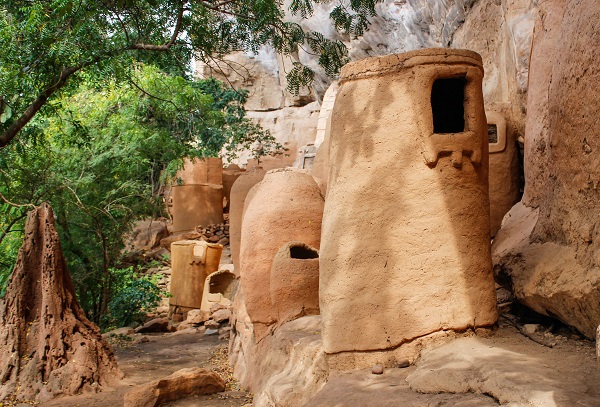
Individual grain pods.
Image courtesy of: Katie Aune
The troglodyte (meaning someone who lives in a cave) villagers decided to move to the lowlands only forty years ago. What remains is a wonderful endorsement of what “village life” was like. Caves had kitchens and bedrooms, both of which had windows and doors. Accessories were also important as jars and oval-shaped vessels can be found throughout the village seemingly waiting to be used.
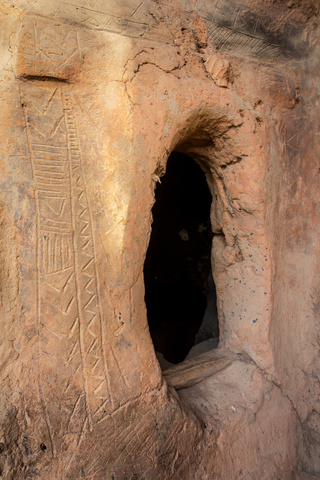
Artwork decoration around the dwelling’s door.
Image courtesy of: The Road Chose Me
The individual huts are hundreds of years old and made entirely by hand. They were built on the side of the mountain so that the rain was able to effortlessly run off them. All the architecture is hidden by the mountain so that enemies were not able to discover the village.
At one point, 1,000 inhabitants lived in Niansogoni and their daily life is still laid out… almost entirely intact. The stones used for grinding grain stand guard besides the vases and bowls scattered throughout. Still today, a handful of families live nearby for security purposes. This is mainly to keep guard over the sacred places where ceremonies with animal sacrifices take place still today.
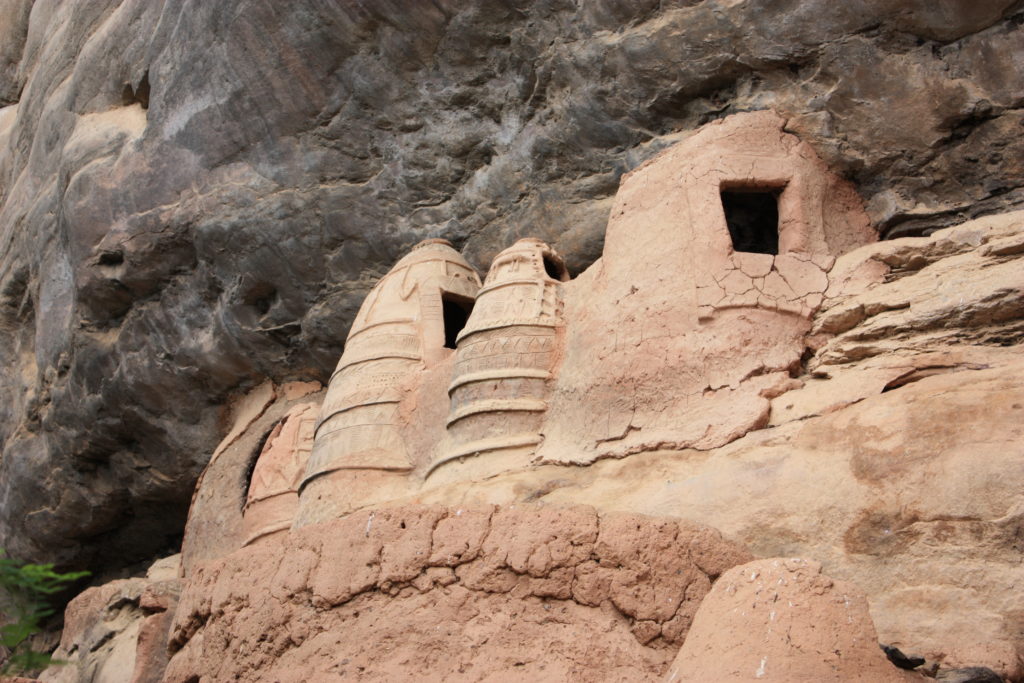
Built into the hills…
Image courtesy of: Peace Corps Worldwide
Niansogoni’s current population used the abandoned village as a hiding place during the area’s horrible tribal wars not so long ago. The climb to the village takes an hour and the elevation takes you up via a dirt “path.” This treacherous road is the only way up and so it is used by anyone wanting to ascend the village. In such, it is the way religious heads get up to the village and how they transport cows, chicken, and other animals to the top for sacrifice during important occasions.
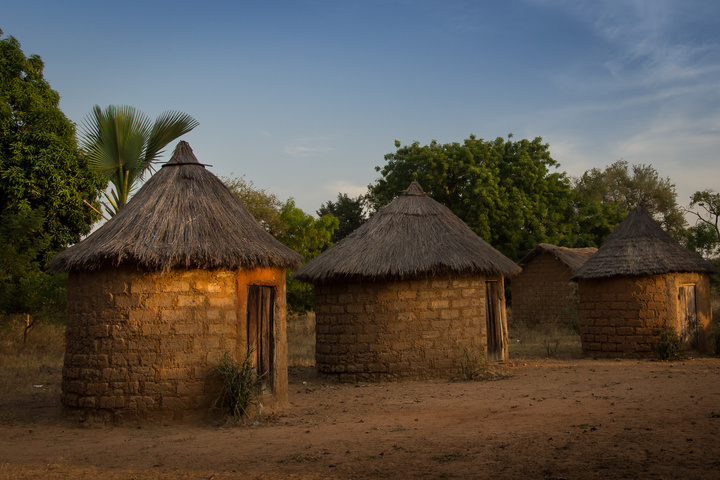
Beautiful huts!
Image courtesy of: The Road Chose Me
Certainly worth a visit if you’re nearby… it is worth it just for the quiet high above among the baobab trees where it feels like you are at the ends of the world.